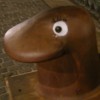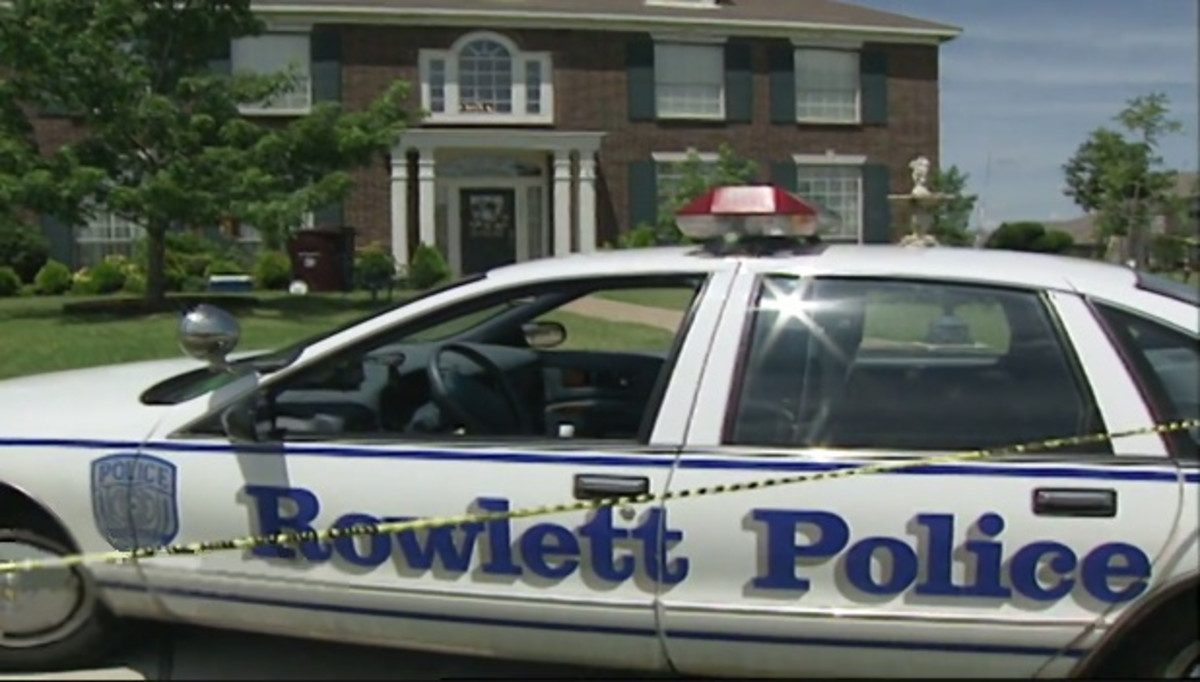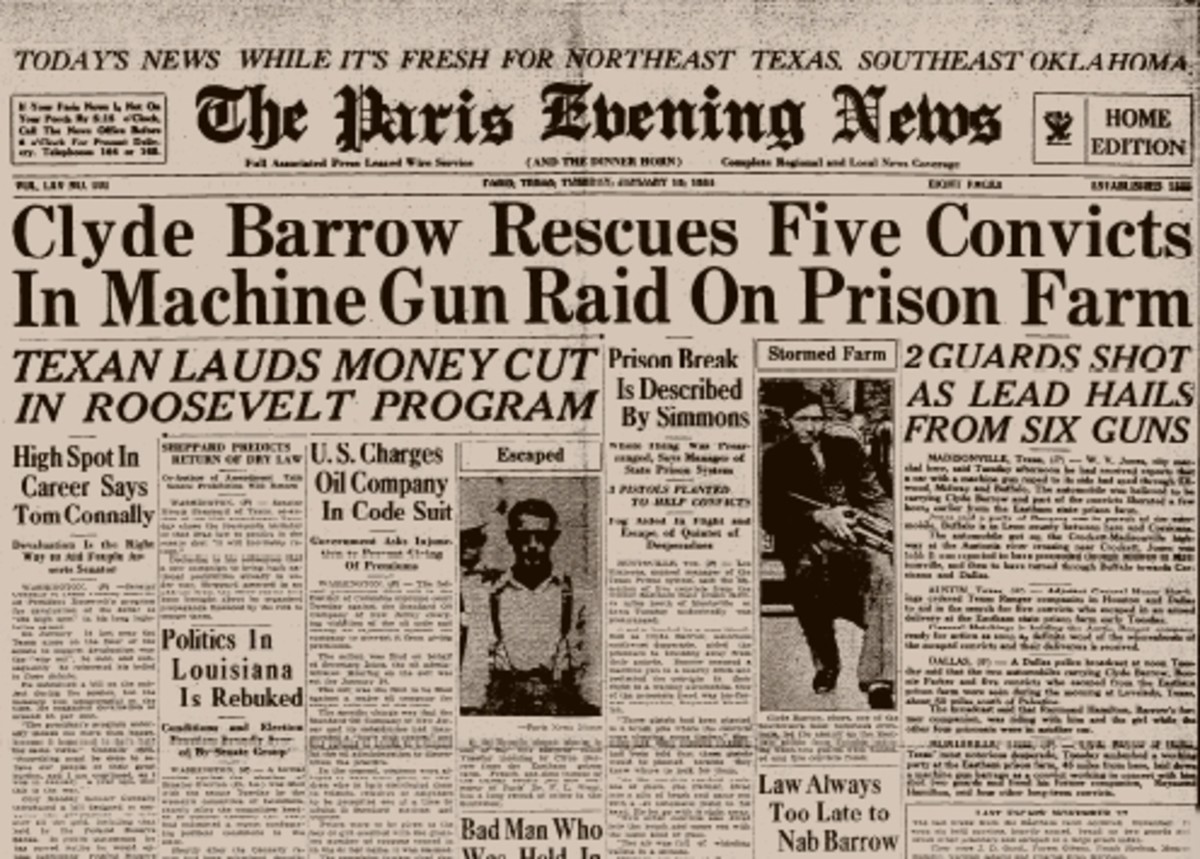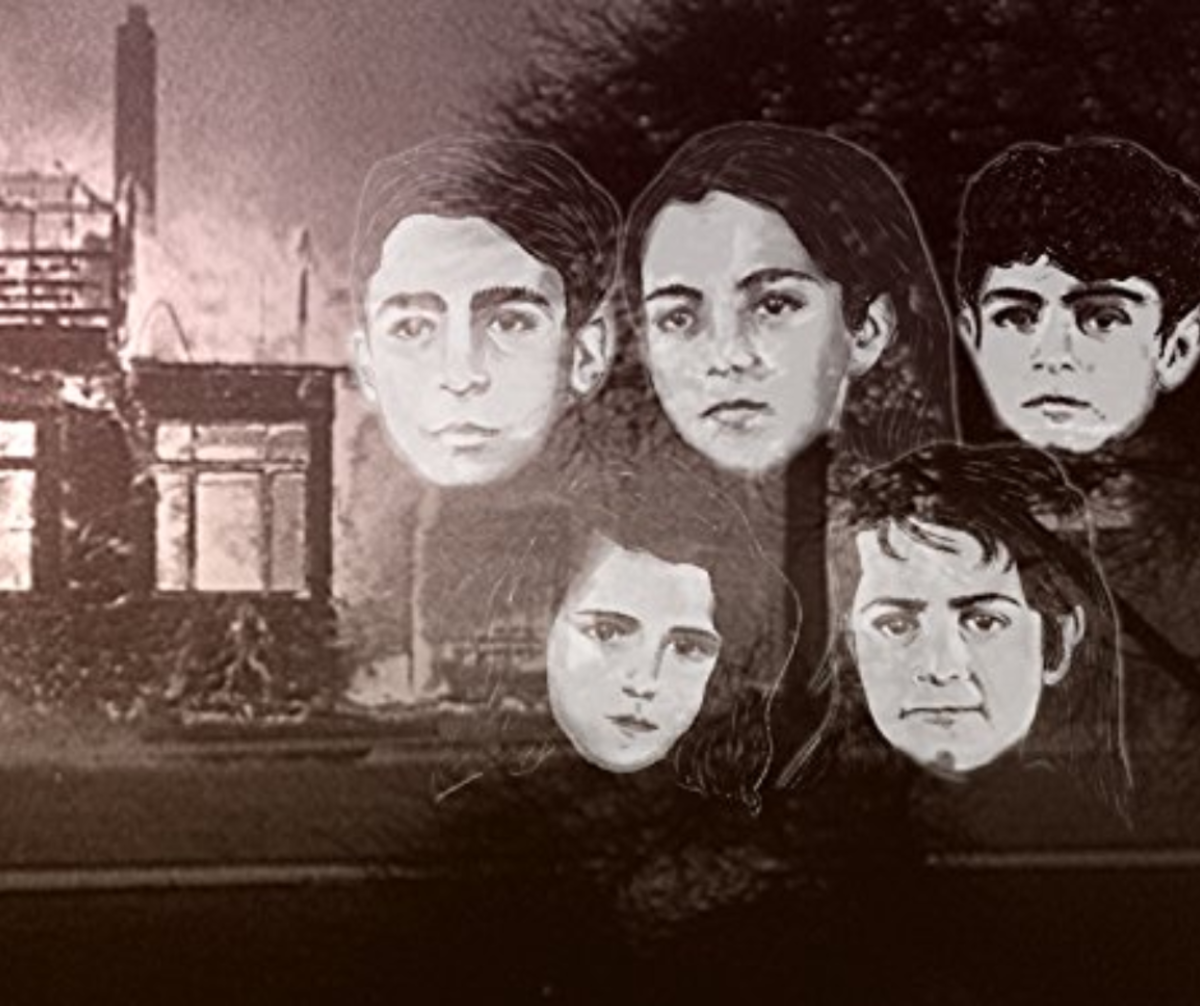Was Charles Walton's Murder a witchcraft killing.
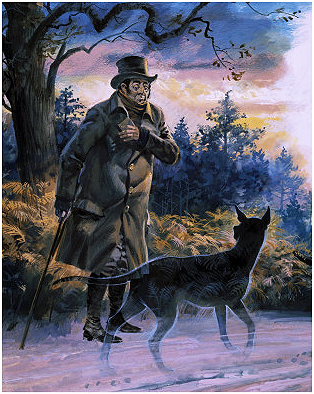
It was 6pm on Valentines Day 1945 and Edith was worried about her 74 year old uncle Charles Walton who had not come home from his work cutting hedges on nearby Firs Farm on the lower slopes of Meon Hill. He had left with his work tools, a hayfork and a trouncing hook (an implement with a straight cutting edge on one side and a curved cutting edge the other side) and a piece of fruitcake for lunch.
She contacted her neighbour, Harry Beasley and together they walked up to Firs Farm. Alfred Potter, Walton's employer that day had not seen him either, but had noticed a distant figure that seemed to be cutting hedges. Potter joined the two and, carrying torches, they walked up the hill to the point where Walton had last been seen where they found Walton's body. His trouncing hook was embedded in his throat, and he had been pinned to the ground with his hayfork, by the neck, so hard that it took two constables to pull it out. A large cross had been carved into his chest and neck (this was not mentioned in the autopsy report and so is suspect) and the blood had soaked into the ground.
The Victim
Charles Walton, was said to be well liked, despite not socialising much. He had lived in the village of Lower Quinton, Warwickshire all his life and shared a rented cottage with his niece when he died. Despite his rheumatism and having to walk with a stick he could still work as a farm labourer, at least in good weather. He was said to be clairvoyant and have a a deep rapport with animals being able to tame wild dogs with his voice and when young had a reputation as a horse tamer.
He seems to have been harmless, possibly on the dotty side of eccentric, preferred the company of animals to humans (rational behaviour considering what some humans are like) and spent hours talking to birds thinking there was an understanding between them. Some visitors feared his alleged power to cast the evil eye: It was claimed, he kept natterjack toads as pets and used these to 'blast' the fields of local farmers, driving them across their land and blighting their crops and livestock: the failure of the 1944 harvest and the death of Potter's heifer on 13 February were blamed on him.
These abilities, his deep knowledge of country lore and the old ways of the countryside together with his reclusiveness may have led to his being labelled a witch and perhaps it was decided that he had to die, killed ritually in a way that ensured his blood would soak into the ground and replenish the soil's fertility.
Or perhaps, since the witchcraft theory is, as will be seen, open to doubt, the killing was made to look like a ritual killing to mislead investigators.
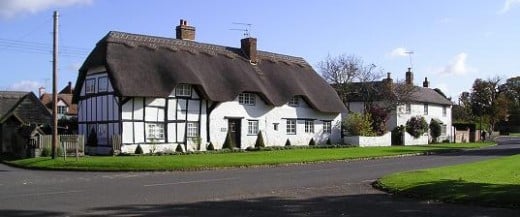
The Police
Walton's cheap tin watch, which he always carried, was missing. A through search for the watch near the body and in and around Walton's cottage failed to find it but 15 years later a workman demolishing outhouses behind Charles Walton's cottage found the watch and a small piece of coloured glass inside the watch case that Walton was known to have carried around with him, never letting it out of his possession. The villagers believed this piece of coloured glass was a piece of Witch Glass, carried to reflect or absorb evil thoughts directed at the owner.
The fact the police had searched the building shortly after the crime and found nothing suggests either the police had missed the watch, implying Walton had changed longstanding habits or the killer, for unknown reasons, returned later to deposit the watch. Neither explanation is satisfactory.
Nothing was found in Walton's past, other than the strange disappearance of Walton's money. When Walton's wife had died in 1927, she left him the then considerable sum of £297. He had put it in a building society but when the police investigated, the balance was only £2 11s 9d. It was estimated that his maximum weekly outgoings were £2 per week, he was very frugal had worked all his life and been a man of very frugal habits. There was about £5 in his house but the rest was never accounted for and its disappearance never explained. However over eighteen years this is about £16.50 a year and its vanishing can be explained by attrition due to inevitable minor small emergencies and/or luxuries.
The police investigation, initially led by a local man,Superintendent Alec Spooner of the Warwickshire CID, was soon taken over by Scotland Yard in the person of Detective Superintendent Robert Fabian and his assistant Sergeant Albert Webb.
Fabian and Webb returned to London, defeated. The murderer was never identified though once Potter was dead Fabian stated he believed Potter was the murderer. Fabian's memoirs and comments on the case need to be taken with a pinch of salt as he wanted to sell his books.
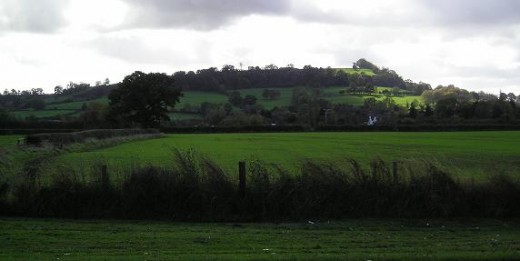
Witchcraft?
Folklore, Old Customs and Superstitions in Shakespeareland, written in 1929 by J. Harvey Bloom included a passage that Superintendent Spooner underlined, which told how in 1875 "a weak minded young man killed a woman named Ann Turner with a hayfork because he believed she had bewitched him". The truth is a little different. To quote Wikipedia
On 15 September 1875, at about 8 o'clock in the evening, Ann Tennant left her house in Long Compton to buy a loaf of bread. On her way back, she met some farm workers returning home from harvesting in the fields. One of the group was a local man, James Heywood, who had known Ann's family for many years. Heywood was simple-minded and was seen as something akin to a village idiot. It is known that he had also been drinking cider. Without warning he attacked Ann Tennant with a pitchfork, stabbing her in the legs and head.
A local farmer named Taylor heard the commotion and ran to Ann's aid. He restrained Heywood until a constable arrived. Ann was taken to her daughter's house but died of her injuries at around 11.15 that night. Heywood claimed that Ann was a witch and that there were other witches in the village whom he intended to deal with in the same way. Although committed to trial for murder, he was found not guilty on the grounds of insanity and spent the rest of his life in Broadmoor Criminal Lunatic Asylum. He is recorded as dying there, at the age of 59, in the first half of 1890.[34]
Any suggestion that Ann was pinned to the ground with a pitchfork or slashed with a bill-hook is pure invention. She was killed in the view of several witnesses and practically the only similarities with Walton's murder are the facts that a pitchfork was used in both instances and that Heywood believed Ann to be a witch and some of Walton's neighbours apparently had the same view of him.
Another book, Warwickshire, by a local man, Clive Holland, published in 1906 described the murder of Ann Turner ( Or Tennant) in greater depth and included an account of the trial of John Hayward (not Heywood) who he said was eventually found guilty and hanged. In his defence, Hayward said he was acting for the good of the whole community as she had "bewitched the cattle and land of local farmers". He said he "pinned her to the ground with a hayfork before slashing her throat with a bill hook in the form of a cross".
Holland claimed this was an ancient and traditional way to kill a witch, known to have existed in Anglo-Saxon England where it was called stacung or 'sticking' and was believed to be the only way to stop the dead witch rising from the grave. However the Bosworth Toller dictionary of Anglo Saxon http://bosworth.ff.cuni.cz/page/b0907 merely says it means piercing with a stake and may refer to the practice of invultiation, sticking a pin in a doll in order to harm someone magically, a definition backed up by http://www.wordnik.com/words/invultuation who say the practice was so common, and belief in its fatal effects so general, that laws were enacted against it. It was called in Anglo-Saxon stacung, ‘staking.’ In any case Walton's body was not pierced.
Folklore also told how in 1885, a plough boy called Charles Walton met a large black dog on nine successive days while on his way home from work. On the last occasion, the dog was accompanied by (or in some accounts turned into) a headless woman either black or dressed in black. Legends about black dogs are not rare, especially in rural areas, and there were stories of a ghostly black dog on Meon Hill heralding death to those who saw it ( a well known folklore myth), but it is unlikely this was the same Charles Walton. The area is also associated with a pack of spectral white hounds, reminiscent of the Hounds of Anwynn, the Celtic lord of Hell.
Coincidentally, at the end of the investigation Fabian encountered a large black dog, a police car ran over a similar dog and a black dog was found hung from a tree near the murder site.
Myths and Errors
There are varying accounts of the case, often contradictory, and the apparently related cases in the books Spooner introduced into the case seem to have disintegrated on close examination. Perhaps Spooner gave undue weight to the evidence in the books, and assumed the authors had done their research thoroughly. It would perhaps be unfair to blame a police officer for not being skeptical of the accounts of amateur historians.
Ann Tennant (not Turner) was not murdered in the same way as Walton. She was stabbed in the legs and head with a pitchfork wielded by a mentally retarded inebriated lunatic called Heywood who claimed she was a witch. He was charged with murder and was either hanged or found not guilty because of insanity and spent the rest of his life in Broadmoor. Did Walton's killer read the account in Warwickshire and deliberately try to imitate it. If so this would give a clue to the killer.
Charles Walton was probably not the boy mentioned in connection with a black dog sighting in 1885. Neither of that Charles Walton's sisters died and indeed both married a few years later.
Walton was killed on what, by the old ( pre 1752) calendar would have been the ideal day for a sacrifice to renew the land, but there is no evidence this was a druidical rite, as some claimed, and we do not know what such a rite would have involved. Some claimed Lower Quinton was near the stone circle called the Whispering Knights, actually some 12 miles away and linked to another formation called the Rollright stones which allegedly make a noise at dawn. There is, however, an Iron Age Hillfort on Meon Hill.
One source notes that Walton was involved with various covens in the area. A provisional theory, which is speculation at this point is that Walton was killed because he had upset someone in a local coven who was willing to take the risk of murdering him. The fact that the way he was killed could correspond to the anglo saxon definition of stacung suggests the killer may have been familiar with Holland's book, though the idea of staking a body to prevent a revenant or restless ghost returning. The killer would have had to know Walton's movements for the day in question and to have been sure he would be alone. The ferocity of the attack suggests someone with considerable physical strength. This alone would eliminate many possible suspects.
Coincidentally, the 1990s childrens program Teletubbies, lambasted by some American religious fanatics, was filmed near Meon Hill and one actor felt that the run of bad luck they suffered after leaving the show in 1996 - his girlfriend walked out, he damaged his ear in a diving accident and, finally, fell seriously ill with a rare tropical disease - is linked to the Walton murder.
Alfred Potter: employer and prime suspect
Potter's behaviour was, according to Fabian, not consistent with innocence. His story of his actions that day changed, parts were inconsistent in timing, and he claimed to have touched the murder weapon when asked to check if Walton was really dead. However there was no real evidence to connect him to the murder. Allegations he owed Walton Money were untrue and he had been claiming rather more than the wages he paid Walton from L&L Potter & Co, his father's business, for which he managed the Firs: in essence Walton was a cash cow for Alfred Potter, and that would have been a good reason for wanting him alive.
Summing up
It is unlikely the facts of this case will ever be known, not least because the villagers seem to have been unwilling to help the police, suggesting either total insularity or some sort of collective involvement.
Ostensibly the murder had aspects of a ritualistic killing, perhaps designed to prevent a bad harvest. Walton was eccentric, had a rapport with animals and a reputation for the evil eye which contrasts with claims in various accounts that he was well liked, for such people make those without such talents uneasy. The contradictions in the various accounts online are contradictory.
The most likely explanation is that Potter murdered Walton for some unknown reason or was closely involved.
But a little voice whispers that we cannot exclude the possibility that some how he had been parted from his Witch Glass, which reappeared 15 years later, and, deprived of that protection, killed perhaps by a malicious spirit, invoked by himself or by an enemy some time earlier, a spirit of enormous strength as evidenced by the fact it took two policemen to pull the hayfork out of the ground, though it could have been driven in by a heavy person standing on it and people in a frenzy or drunk have been known to exhibit abnormal strength. The vanishing and reappearance of the watch matches other cases reported from time to time. But this is pure speculation at present.
Perhaps we had best stick to Potter as the suspect.
